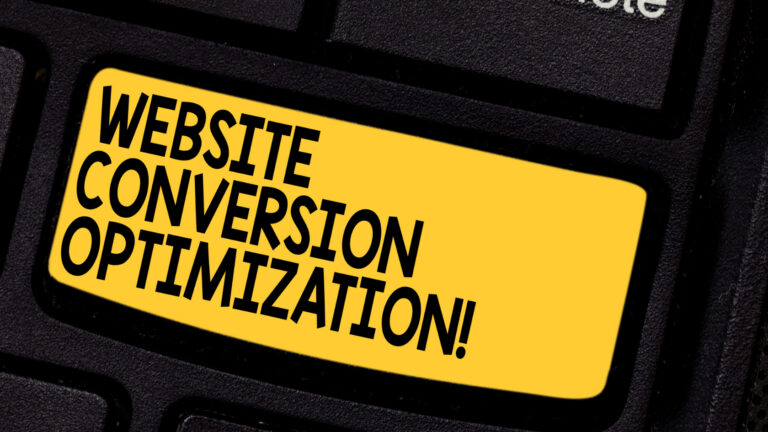
Are you ready to optimize your landing pages for maximum search engine visibility?
Discover the top SEO strategies that will help you dominate the rankings and drive more traffic to your website.
From conducting thorough keyword research to creating high-quality content, this article will provide you with the essential steps to improve your landing page’s performance.
Get ready to take control of your SEO and achieve the results you’ve been waiting for.
Let’s dive in!
Key Takeaways
- Analyze competitors’ keywords and identify long tail keywords to increase the chances of ranking higher.
- Pay attention to meta tags and strategically place keywords in title tags and meta descriptions for improved visibility.
- Optimize content length and quality by creating engaging and informative content with visual elements.
- Improve user experience and mobile optimization by enhancing navigation, reducing bounce rate, and optimizing for mobile devices.
Keyword Research
To optimize your landing pages for search engines, you need to conduct thorough keyword research. This involves analyzing your competitors and identifying the long tail keywords they’re targeting. Competitor analysis allows you to understand what keywords are driving traffic to their websites, giving you insights into the keywords that are most relevant to your industry.
By incorporating these long tail keywords into your landing page content, you can increase your chances of ranking higher in search engine results, attracting more targeted traffic. Long tail keywords are specific phrases that have lower search volume but higher conversion potential. They allow you to target a niche audience and compete against larger competitors.
Conducting comprehensive keyword research and using long tail keywords will give you a competitive edge in the online marketplace.
On-Page Optimization
When it comes to on-page optimization for your landing pages, there are several key strategies to consider.
First, make sure to pay attention to your meta tags, as they play a crucial role in optimizing your page for search engines.
Second, focus on strategically placing your keywords throughout your content to improve visibility.
Lastly, optimize your content by making it engaging, informative, and relevant to your target audience.
Meta Tags Importance
Boost your landing page’s search engine optimization (SEO) by prioritizing the importance of meta tags in on-page optimization. Meta tags are snippets of code that provide information about your webpage to search engines and website visitors.
Optimizing your meta tags is crucial for improving your page’s visibility and attracting relevant traffic. To optimize your meta tags, follow these best practices:
- Title Tag: Include a concise and relevant title that accurately describes the content of your landing page. Place your target keywords towards the beginning of the title tag.
- Meta Description: Write a compelling and informative meta description that entices users to click on your page. Incorporate relevant keywords naturally, but avoid keyword stuffing.
- Meta Keywords: While Google doesn’t consider meta keywords for ranking, other search engines might. Include a few relevant keywords to improve visibility on those platforms.
Keyword Placement Tips
One important aspect of on-page optimization for landing pages is the strategic placement of keywords to improve their search engine optimization (SEO) performance. By strategically placing keywords throughout your landing page, you can increase its visibility in search engine results and attract more organic traffic.
To optimize your keyword placement, start by conducting competitive analysis strategies to identify the keywords your competitors are targeting. This will help you understand which keywords are most relevant and effective in your industry.
Additionally, consider implementing long tail keyword optimization, which involves targeting specific and more detailed keyword phrases. By incorporating these keywords in your landing page’s headings, subheadings, content, and meta tags, you can boost its SEO performance and improve its chances of ranking higher in search engine results.
Content Optimization Techniques
To optimize your landing page’s SEO performance, focus on implementing effective content optimization techniques.
One important aspect of content optimization is the length of your content. Search engines tend to favor longer content, as it provides more information and value to users. Aim for a minimum of 300 words, but strive for longer, more in-depth content whenever possible.
Another crucial element to consider is the use of visual elements. Including images, videos, infographics, and other visual aids can make your content more engaging and appealing to users. Visual elements not only help break up the text, but they also provide additional context and enhance the overall user experience.
Remember to optimize the file size of your visuals for faster loading times and to include relevant alt text for SEO purposes.
Content Quality and Relevance
Ensure your content is of high quality and relevance for optimal SEO strategies on landing pages. The content length plays a crucial role in engaging your audience and improving your search engine rankings. Aim for a sufficient word count that thoroughly covers the topic without being excessive.
Additionally, focus on creating visually appealing content that captures the attention of your visitors. Incorporate images, videos, and infographics to enhance the overall user experience. Remember to optimize these visuals by using descriptive alt tags and file names to make them more accessible to search engines.
User Experience and Site Speed
Improve your visitors’ experience and optimize your site speed to enhance your SEO strategies on landing pages.
Improving navigation and reducing bounce rate are crucial factors in providing a positive user experience. When visitors find it easy to navigate through your site, they’re more likely to stay longer, explore more pages, and ultimately convert into customers.
To achieve this, ensure that your landing pages have a clear and intuitive layout, with easily accessible menus and relevant internal links.
Additionally, optimize your site speed to minimize loading times and provide a seamless browsing experience. Slow-loading pages can frustrate visitors and lead to high bounce rates.
Mobile Optimization
Optimize your landing pages for mobile devices to boost your SEO strategies. With the increasing number of mobile users, it’s crucial to ensure that your website is responsive and provides a seamless mobile user experience. Responsive design allows your landing pages to adapt to different screen sizes, making them accessible and visually appealing on all devices.
When it comes to mobile optimization, focusing on the user experience is key. Mobile users expect fast loading times, easy navigation, and clear content. Make sure your landing pages load quickly and are easy to navigate with a simple and intuitive layout. Use legible fonts and avoid clutter to enhance readability on smaller screens.
Link Building and Backlinks
To effectively boost the SEO strategies for your landing pages, it’s essential to incorporate link building and backlinks into your overall marketing strategy.
Link building involves obtaining high-quality backlinks from other websites, which not only helps to improve your website’s visibility but also enhances its credibility and authority in the eyes of search engines.
One effective way to build backlinks is through guest posting, where you write and publish articles on other relevant websites in your industry, including a link back to your landing page.
Another crucial aspect of link building is anchor text optimization, which involves using targeted keywords as the clickable text for your backlinks. This helps search engines understand the relevance of the linked page and improves its ranking in search results.
Analytics and Tracking
To maximize the effectiveness of your landing pages, it’s crucial to make data-driven decisions. Analytics and tracking allow you to gather valuable insights into user behavior and preferences, enabling you to optimize your landing pages accordingly.
Importance of Data-Driven Decisions
Your landing page’s success relies on your ability to make data-driven decisions using analytics and tracking. Data analysis plays a crucial role in understanding the performance of your landing page and identifying areas for improvement.
By analyzing data, you can gain valuable insights into user behavior, such as how visitors are finding your page, how long they stay, and whether they convert. These insights allow you to make informed decisions about what changes to make to optimize your landing page for better results.
The decision-making process becomes more effective when it’s guided by solid data and metrics. Tracking the right metrics and analyzing the data can provide you with the information needed to make strategic and impactful decisions that drive conversions and improve the overall performance of your landing page.
Tracking Conversion Rates Effectively
The key to optimizing your conversion rates lies in effectively tracking and analyzing your data. By implementing proper analytics and tracking tools, you can gain valuable insights into the effectiveness of your landing pages and identify areas for improvement.
A/B testing is a powerful technique that allows you to compare two versions of a landing page and determine which one performs better in terms of conversion rates. This method enables you to make data-driven decisions and refine your landing pages to maximize their impact.
With conversion rate optimization as your goal, it’s crucial to regularly monitor and analyze your data to identify trends, patterns, and potential bottlenecks. By doing so, you can continuously improve your landing pages and drive better results.
How Can I Implement These Effective SEO Strategies for Landing Pages?
When looking to implement top SEO strategies for landing pages, focus on optimizing meta tags, including relevant keywords, and creating high-quality, engaging content. Utilize internal linking to improve site structure and user experience. Additionally, ensure mobile responsiveness and fast page load times for better search engine visibility and user satisfaction.
Conclusion
Congratulations! You have now mastered the top SEO strategies for landing pages. By conducting thorough keyword research, optimizing your pages, creating high-quality content, ensuring a seamless user experience, and building strong backlinks, you’re well-equipped to drive organic traffic and boost your site’s visibility.
But remember, the world of SEO is ever-evolving, so stay informed and adapt your strategies accordingly. Keep implementing these tactics, and watch your landing pages soar to new heights!
- How to Plan a Content Calendar That Works - 29/10/2025
- SEO Content vs. Social Media Content: What’s the Difference? - 23/10/2025
- The Best Types of Content for Service Businesses - 16/10/2025


